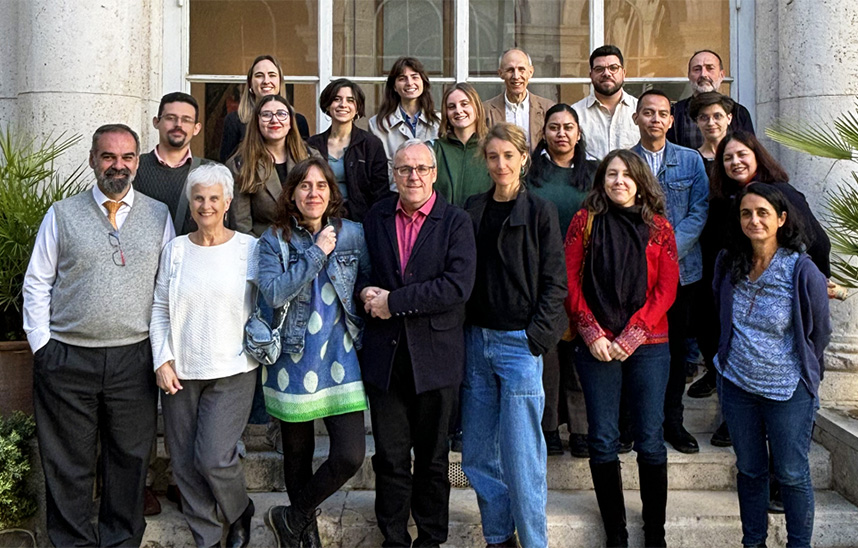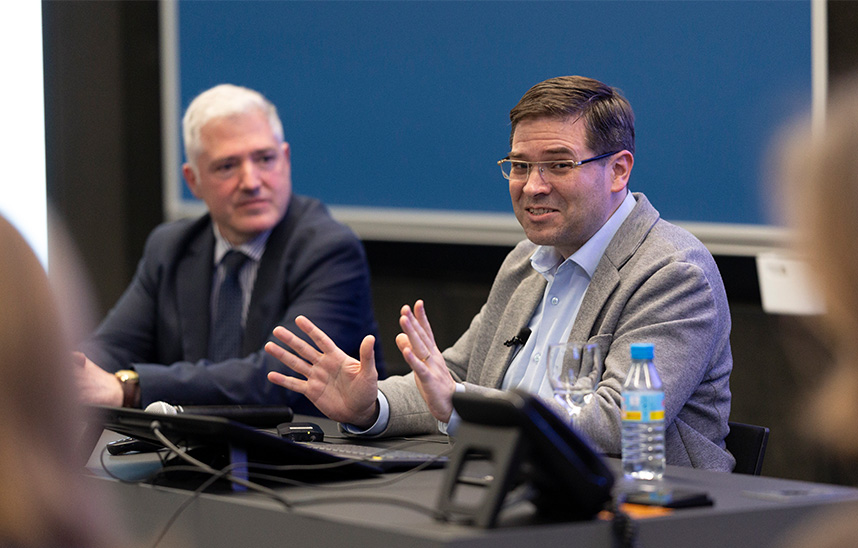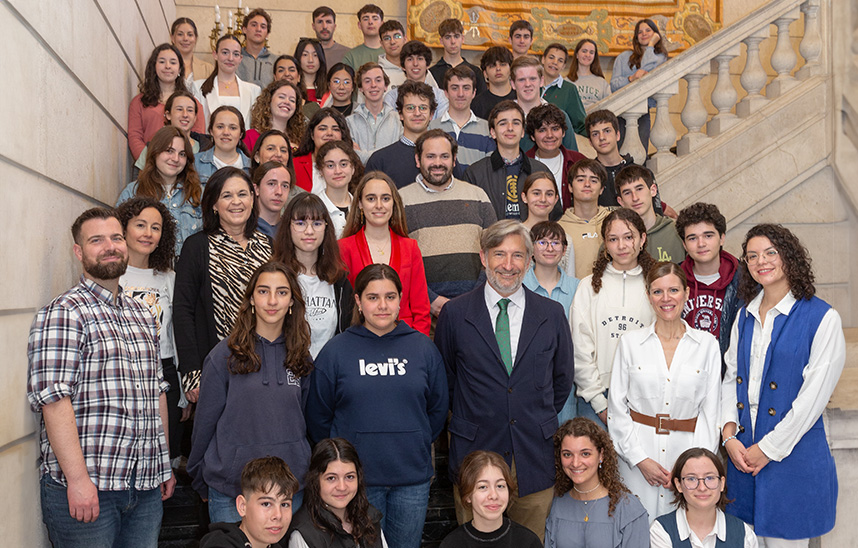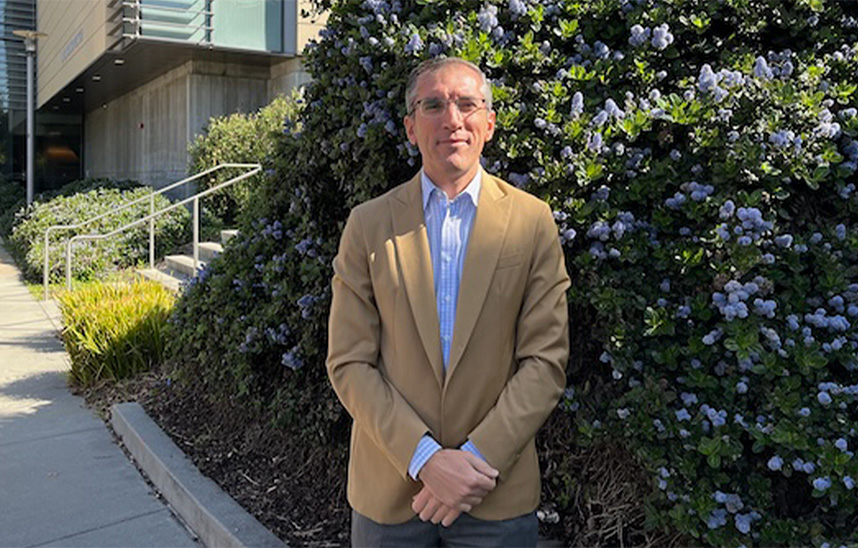noticia_FYL_2021_01_29_javier_portus_ciclo_el_prado
Javier Portús: "There is not a single artist before Goya of whom we have as much documentary wealth as in the case of Velázquez".
The Head of Conservation of Spanish Painting until 1800 of the Prado Museum gives the first session of the lecture series that the art gallery organizes at the University of Navarra.

FotoManuelCastells/Javier Portús, speaker of the first session of lecture series Francisco Calvo Serraller
29 | 01 | 2021
"There is probably not a single artist before Goya of whom we possess as much documentary wealth as in the case of Velázquez. We have a very high Degree of knowledge about his degree program management assistant , the positions he held, his economic life, or the most important events of his family life, which has conditioned the vision we have of his personality and his art". This was stated by Javier Portús, Head of Conservation of Spanish Painting until 1800 at the Prado Museum. Prado Museumat the lecture series Francisco Calvo Serraller that the School of Philosophy and Letters of the University of Navarra is organizing in Pamplona, in partnership with the Friends of the Prado Museum Foundation.
Nearly 200 people attended the first session of this series, which will address the figure and work of Diego Velázquez in four events. The inaugural event, held at the University of Navarra Museumwas presided over by Julia Pavón, dean of the School of Philosophy and Letters; Nuria de Miguel, administrative assistant general of the Friends of the Prado Museum Foundation; José Antonio Canales, director general of Viscofán, the sponsoring entity; and Mercedes Jover, director of the Museum of Navarra.
Under the degree scroll "Velázquez: thinking differently", Portús, who is also director of the cycle, has made a journey through the artistic career of the painter, from his early years in Seville, "in a society receptive to his proposals, where he could give free rein to his will to innovate and distinguish himself from the rest of his contemporaries"; to his last works, "marked by a historical awareness"; through his period at court, focused on royal portraits; his first trip to Rome; or his time at the papal court. "The 130 works that are distributed throughout his life allow us to draw a fairly accurate portrait of his personality and what he was as an artist," he said.
In this sense, he pointed out that there are three sources through which Velázquez can be known: "Through his work, the documentation that was generated around him during his lifetime, and the work of approach and reflection of historians, art historians, thinkers and artists for more than three centuries". In contrast, Portús has assured that "there is a significant lack of documentation staff, as we have hardly any of his writings bequest and there are few writings of his contemporaries that inform us about his feelings, expectations, etc.. They have to be deduced through indirect sources". In contrast to contemporary art, "where we associate artistic expressivity as expression staff, the transmission of subjectivity did not play a central role in Velázquez's painting, so trying to understand his "I" staff through his works is an ambiguous terrain".
Works in which, as explained by speaker, "reality was a fundamental point of inspiration, something unusual at the time, where the common thing was to idealize", and which constituted "a pulse to the classical tradition": "From a young age, he gives evidence of a taste for paradox, something that will accompany him throughout his artistic degree program : he involves the viewer in the perceptive game of the work, activating intelligence and imagination". "From the beginning to the end we can see a desire for singularity and differentiation, an attitude towards things, which seeks to go beyond the apparent," he concluded.
Javier Portús holds a PhD in Art History from the Complutense University of Madrid. In 1999, he joined the Faculty of Museum Curators and began working as a curator at the Museo del Prado, to which he has been linked since 1993. He is a specialist in the visual culture of the Golden Age in Spain, in the links between painting and literature, as well as in the reception of works of art and the festive and ceremonial world. For the Prado, she curated the following exhibitions: Murillo's Children; La conference room Reservada y el desnudo en el Museo del Prado; The Spanish Portrait: From El Greco to Picasso; Velázquez's Fables; The Young Ribera; The Family of Philip IV, Metapainting; A Journey to the Idea of Art; and Museo del Prado 1819-2019. Un lugar de report, whose catalogs he also writes and coordinates. He also regularly publishes articles in specialized journals.
The next session of the series will take place on Wednesday, February 10, at 7 p.m., at the Museum of the University of Navarra. It will be given by Bonaventura Bassegoda, Full Professor of Art History at the Autonomous University of Barcelona, who will focus his talk on "Velázquez's religious painting in his Sevillian period".
The lecture series Francisco Calvo Serraller has the sponsorship de Viscofan and the partnership of the Diario de Navarra Foundation and the Museo Universidad de Navarra. The course is part of the relationship between the School of Philosophy y Letras and the Fundación Amigos del Museo del Prado, through student internships, activities developed by professors and other collaborations. Tickets can be purchased at locker or on the website of the Museo Universidad de Navarra.





